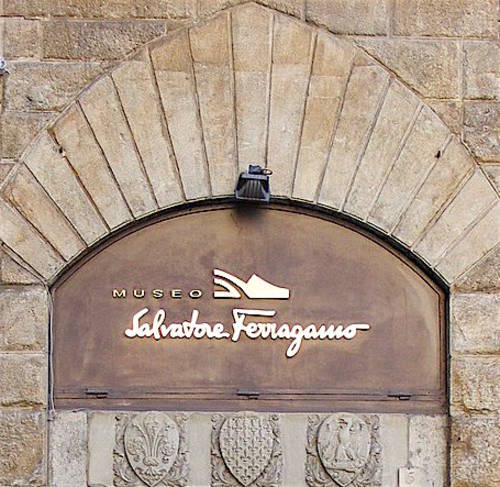
Florence is determined to keep its place as a centre of fashion (despite fierce competition from Milan). Of the famous “Pitti” fashion shows, which are held throughout the year, the most prestigious remains “Pitti Uomo”, which takes place for a week in June. This year Eike Schmidt, director of the Uffizi and Pitti galleries, allowed fashion shows to take place in the Pitti Palace ballroom, thus reintroducing a tradition which flourished in the 1950s and 1960s. He has also renamed the Pitti’s Galleria del Costume. Now known as the Museo della Moda e del Costume, it makes clear its role in documenting the history of fashion.
Another exhibition centred on fashion, entitled “1927: The Return to Italy”, runs at the Museo Ferragamo, the company’s elegant flagship store at the end of Via Tornabuoni, until May 2018. Curated by the much-respected art historian Carlo Sisi, it provides a fascinating history of Italy in the 1920s. The setting cleverly evokes an ocean liner: in 1914 the 17-year-old Salvatore Ferragamo sailed from Naples for America as a third-class passenger. Just 13 years later he returned as a highly successful businessman, with a first-class cabin on the huge ocean liner Roma (she had made her maiden voyage the previous year and a film made at the time shows life aboard). Born in Irpinia in the south of Italy, where he had set up a business selling handmade shoes when aged only 11 (six older boys worked for him), Ferragamo decided to emigrate to the land of opportunities, and by 1923 was an American citizen and had opened a shoe store in Hollywood. All the famous movie stars soon became his devoted clients. His decision to return to Italy in 1927 was prompted by a desire to find skilled Italian artisans to increase production and it was only in Florence that he found the quality he was looking for. He settled in the city, founded a shoe factory, and by 1938 was able to purchase the huge medieval Palazzo Feroni on the Arno, which still houses the company’s main store. On show, beside the shoes he crafted, are numerous examples of the decorative arts made in Florence in the 1920s (including lovely woven fabrics). One of the most moving exhibits is the ‘home movie’ Ferragamo made of the wonders of Florence when he first arrived there from Naples with his sisters.
After the First World War hemlines had risen, exposing women’s legs and ankles, and thus the shoe became far more conspicuous. Ferragamo experimented with all kind of materials, including kid and antelope skins, and even ‘sea leather’ from fish. His sandals, boots and hand-painted shoes were renowned. He studied closely the anatomy of the foot and issues of posture in order to create models that were comfortable as well as stylish. Hundreds of these shoes are on show, as well as his archive of patented designs.
But the exhibition has also provided the opportunity to study the role of women at this time (just before Fascism took hold) and the influence of the emancipated American flapper in Europe. The importance of sport and dance in liberating the female figure (if only from corsets!) is underlined by contemporary films, and many fascinating of posters are included. Amongst the sculptures and paintings, all rigorously confined within this one decade, the 1920s, some of the most interesting are by the brothers RAM and Thayaht (Ruggero Alfredo and Ernesto Michahelles), little-known outside Tuscany, who were particularly interested in fashion. They were at work in Florence producing remarkable paintings, graphics and sculpture (some of them using an amalgam of aluminium and silver which Thayaht invented and named “taiattite”, after himself). A painting (owned by the Ferragamo Foundation) by Giovanni Colacicchi shows Palazzo Feroni itself in Piazza Santa Trinita at this period.
This is a delightful exhibition and is accompanied by an excellent catalogue. It clearly demonstrates that the fashion house of Ferragamo, even though now a global brand, can still contribute to the life of the city of Florence.
by Alta Macadam






